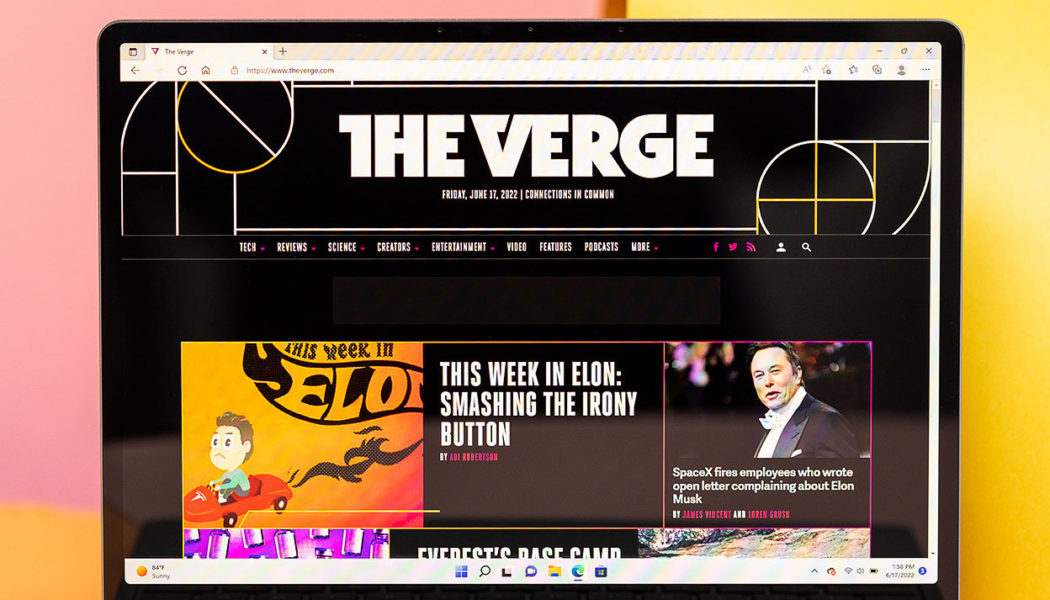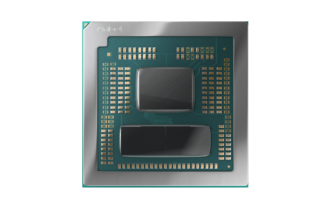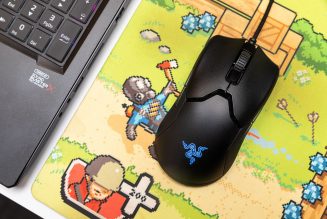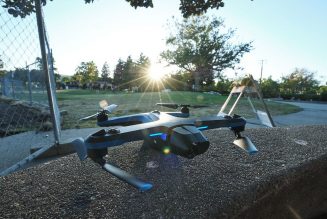Small, premium laptops — truly small ones — have fallen out of fashion in recent years. The smallest computer Apple sells has a 13.3-inch screen. Dell’s tiniest XPS comes with a 13.4-inch panel. HP’s Spectre X360 line scales down to 13.5-inch screens, which the company lists as a 14-inch class. The 11- or 12-inch laptops you can buy (the ones that aren’t tablets trying to masquerade as something else) are typically cheap and slow. Modern laptops have trimmed weights and bezels and frames considerably, making it easier to tote around those 13-inch or larger screens, finding a premium, consumer laptop with 12-inch or smaller screen for the ultimate in portability is a challenge.
That’s where Microsoft’s Surface Laptop Go 2 comes in. The least expensive laptop Microsoft sells (not counting the education-only Laptop SE), the $599-and-up Laptop Go 2, is also the smallest and lightest, with a 12.4-inch screen and weight of just under two and a half pounds. But it maintains the Surface design aesthetic and features, including a comfortable keyboard, clear speakers and microphones, a smooth trackpad, and 3:2 aspect ratio.
Of course, that portability doesn’t come without compromise. The Go 2 doesn’t have the range of processor, RAM, and storage options of larger laptops, sticking with an 11th Gen Core i5 processor and maxing out at 8GB of RAM and 256GB of storage. Battery life doesn’t even reach half a day of work for me. This isn’t a computer for heavy, demanding workloads (and certainly not gamers or those doing creative visual work). It’s meant for someone who just needs to stay on top of email, compose some documents, and browse the web and wants a small, light on-the-go machine. After all, it’s right in the name.
How we review and rate devices
The Surface Laptop Go 2 maintains Microsoft’s minimalist Surface aesthetic: its squared-off wedge shape is identical to the first-generation Go, from 2020, or a slightly shrunken-down Surface Laptop 4. This time around, you can get it in a sage green in addition to the light blue, gold, or silver options. My review unit has this green color, and it’s quite nice. I’m not mad that this year’s green phone trend is bleeding over to laptops now.
Though this is Microsoft’s least expensive laptop, it doesn’t look or feel like a cheap computer, with tight tolerances, lack of chassis flex, and a stiff hinge with perfect one-finger opening. (The lack of tacky stickers on the deck is also rare in this price range.) Like the larger Surface computers, the Go 2 has an aluminum lid and deck — though Microsoft does use a plastic panel on the bottom, instead of aluminum like the Surface Laptop 4, it never once had a negative impact on my experience. You’ll be hard-pressed to find a nicer-feeling computer in this price range.
The Laptop Go 2 has the same port selection as its predecessor, which is to say, it’s kinda lousy. There’s a single USB-A port, a single USB-C port (not Thunderbolt, sadly), a 3.5mm headphone jack, and Microsoft’s magnetic Surface Connect port for charging and docking. You can use that USB-C to connect to external displays or charge the device, but you won’t get the benefits of superfast data transfer that Thunderbolt brings. Microsoft’s larger Surface Laptops are similarly port-limited, so this isn’t a surprise, but another couple USB ports here would really let you leave the dongle life behind.
:no_upscale()/cdn.vox-cdn.com/uploads/chorus_asset/file/23642697/akrales_220617_5293_0045.jpg)
The screen on the Laptop Go 2 is also unchanged from its predecessor — a 12.5-inch, 3:2, 1536 x 1024 touch panel. It’s not the brightest or most pixel-dense screen you can get, but in my testing, peak brightness hit a respectable 360 nits, which is enough to let me use the laptop outdoors under an umbrella without much issue. In normal indoor situations, comfortable brightness (about 200 nits) was around 70 percent on the slider. (One aside: if you do plan to use the Go 2 outdoors, you might want to leave the polarized sunglasses at home. The polarization on the screen means the display was black when I wore my sunglasses, unless I rotated the computer 90 degrees. I do not have this issue with MacBooks and the same sunglasses, so it’s possibly something Microsoft could fix for next time.) Touch response on the screen is right in line with expectations, though it is not compatible with Microsoft’s Surface Pens for stylus input.
Like other Surface computers, the Go 2’s screen is well-calibrated and color-accurate out of the box. It covers 99 percent of the sRGB spectrum, 74 percent of AdobeRGB, and 76 percent of P3, according to my colorimeter, which means it could be used for photo editing work without much issue. But most people buying this computer will just appreciate the screen’s pleasing colors and contrast and lack of color shifting or ghosting. They will also appreciate the 3:2 aspect ratio, which provides more vertical real estate than the typical 16:9 screens you get in this price range, ideal for web browsing and document work.
The Laptop Go 2 has an excellent keyboard, despite the laptop’s smaller dimensions, with well-spaced keys, comfortable travel, and quiet feedback. My only real complaint is the lack of keyboard backlight, which should be non-negotiable at this price and is found on many other popular laptops in this price range. The trackpad is smaller than you’ll find on a modern MacBook or XPS laptop, but it works perfectly fine for tracking, scrolling, and other multifinger gestures, and I had no issues with palm rejection.
:no_upscale()/cdn.vox-cdn.com/uploads/chorus_asset/file/23642696/akrales_220617_5293_0038.jpg)
:no_upscale()/cdn.vox-cdn.com/uploads/chorus_asset/file/23642699/akrales_220617_5293_0051.jpg)
The power button, in the upper-right-hand corner of the keyboard, has an integrated fingerprint scanner for Windows Hello authentication (on upgraded tiers, not the base model). More expensive Surface computers use facial recognition cameras, but the fingerprint sensor is quick and easy to use; I didn’t miss facial recognition at all. There’s even a little light around the scanner to help you find it easily when you open the lid.
The camera uses a 720p sensor instead of the 1080p one found in other Surface computers. It’s not stunning by any means, but it isn’t the worst either, with sharper images and more detail than Dell’s XPS cameras or the 720p camera on Apple’s latest 13-inch M2 MacBook Pro. It’s flanked by two microphones that, along with the Laptop Go 2’s speakers under the keyboard deck, provide clear video call audio.
All Surface Laptop Go 2 models have the same Core i5-1135G7 quad-core processor inside. It’s a capable chip and had no issues handling my typical workload of dozens of browser tabs, Slack, Twitter, email, Zoom, and other work apps spread across multiple virtual desktops. It is not, however, useful for AAA gaming or creative work. For fun, I ran the PugetBench benchmark for Adobe Premiere Pro that we use to evaluate more powerful laptops, and it scored a 155. We typically see scores in the 700 and up range in laptops that have discrete graphics cards and more powerful processors. Don’t buy this if you plan on editing 4K video; this isn’t the laptop for you.
The $599 base configuration comes with just 4GB of RAM and 128GB of storage, which isn’t enough. My $799 review unit has 8GB of RAM and 256GB of storage; that’s the only model I recommend buying. Any less RAM or storage and you’ll run into performance issues or storage problems relatively soon. That price is $100 less than a similarly equipped first-gen Surface Laptop Go, but it’s still far from cheap. (As of this writing, both Microsoft and Best Buy have discounted the range from $40 to $100, which means you can get a top spec one for about $700. That’s not a bad deal.)
Despite its small size and weight, the Laptop Go 2 is not a fanless computer, and its small fan is audible and often annoying. My first review sample had a clicking sound when the fan was at a low speed (which it frequently spins at) that was quite irritating while in a quiet room. A replacement didn’t have that problem, so it’s possible it’s limited to that specific unit. Higher fan speeds present a more common whooshing sound, but I typically only heard those when in Zoom calls or running benchmark tests. The bottom of the laptop also gets warm, but the deck and palm rests remain comfortably cool.
Battery life is perhaps the biggest problem I have with the Surface Laptop Go 2, however. With my standard workload and the screen set to about 200 nits, I averaged less than five hours of use between charges. Many days I had to plug in before noon to ensure it didn’t die in the middle of a meeting or working on a document. I have the uncanny ability to kill laptop batteries faster than a lot of my colleagues, but many 13-inch laptops can easily last twice as long with my workload, so you really have to value the slightly smaller size and lighter weight to accept this kind of battery performance.
Between the fan noise, noticeable heat, and lousy battery life, I wish Microsoft had just used an Arm-based processor in this computer. Plenty of Arm chips, like what’s in the Surface Pro X, Apple’s latest computers, and a few Chromebooks, have enough power to match the usage profile of a computer like this, plus run cooler, don’t need fans, and have much better battery life. Windows 11 continues to get better with Arm too, and this feels like the right kind of computer to leverage that.
:no_upscale()/cdn.vox-cdn.com/uploads/chorus_asset/file/23642701/akrales_220617_5293_0088.jpg)
During my entire time using the Surface Laptop Go 2, I was reminded of Apple’s 11-inch MacBook Air and 12-inch MacBook from 2015. Both of those were high-end, small computers that were designed to be as light and portable as possible, while still providing excellent keyboards, trackpads, and capabilities. They also had compromises when it came to battery life and power (and ports).
The Surface Laptop Go 2 feels like a modern version of those compact laptops, complete with many of the same limitations. It’s too expensive to be a real budget option, not powerful enough to be for demanding users, and doesn’t have the battery life to last all day away from an outlet. You can pay less money and get more performance, battery life, and computer from a Chromebook or even another Windows laptop.
What the Laptop Go 2 is, though, is a small, lightweight computer with a comfortable keyboard, trackpad, and screen, wrapped in a nice-looking and -feeling package. It also comes with a real processor and enough RAM and storage to do real work, unlike other subcompact computers. If those are the specific things you value and are looking for in a laptop, well… the Surface Laptop Go 2 is basically your only option right now.









